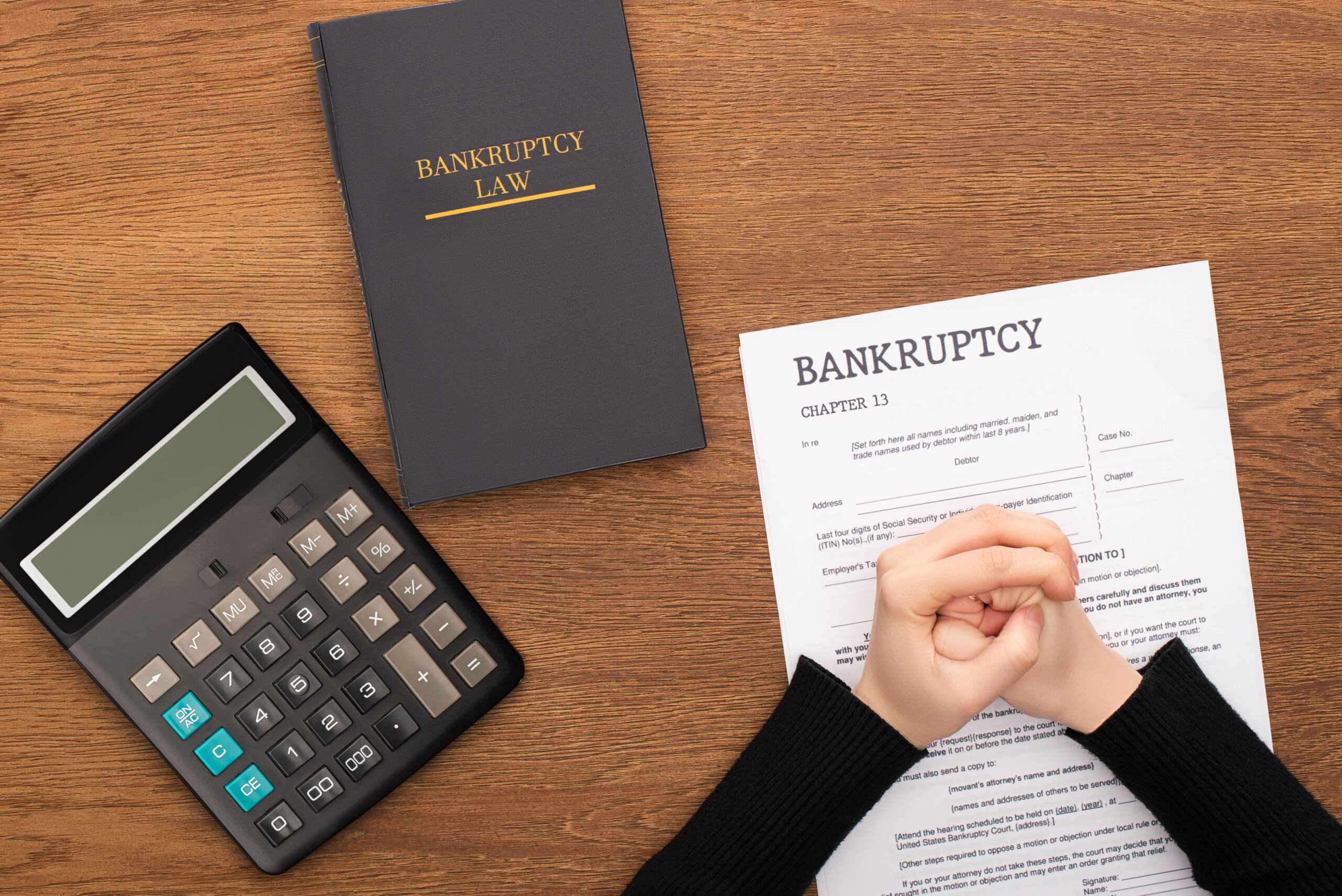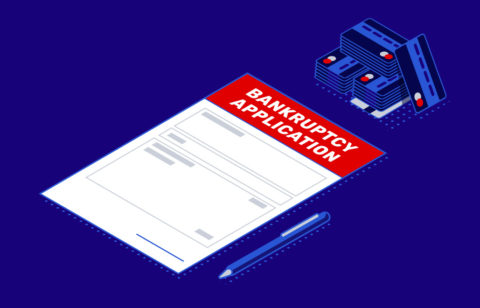ankruptcy can feel like an overwhelming process with serious financial consequences, but it can be a helpful tool for people struggling with debt.
If you are considering filing for bankruptcy, it’s important to understand the different types, how they work and what to expect. Whether you’re just curious about bankruptcy or you are seriously considering filing, this article will give you the information you need to make more informed decisions.
Exploring the Chapters of Bankruptcy
Bankruptcy in the U.S. is governed by federal law and has different chapters for different situations. Understanding the types of bankruptcy is important, as they have different consequences for individuals, families and businesses.
Chapter 7: Liquidation
Chapter 7 bankruptcy is a form of bankruptcy that typically involves selling your non-exempt assets. Non-exempt assets are things that can be sold, such as houses, cars and jewelry.
However, some assets may be exempt from liquidation, such as clothes, basic furniture and certain tools of the trade. These exemptions ensure that people can keep the things they need to go about their daily lives.
Chapter 7 bankruptcy may be a good option for people who are unable to repay their debts and need a fresh start.
Key Features of Chapter 7:
· Asset Liquidation: A court-appointed trustee will typically determine which non-exempt assets may be sold, such as your house or car. The trustee uses the money to pay off your creditors.
· Debt Discharge: Unsecured debts, such as credit card debt and medical bills, may be discharged, meaning you are no longer obligated to pay those debts. However, some debts, like student loans and alimony, are typically not discharged.
· Means Test: You must pass a means test to qualify for Chapter 7 bankruptcy. Courts consider your income, and it must be below a specific level for you to qualify for bankruptcy.
Benefits and Challenges:
Chapter 7 bankruptcy is a relatively fast way to get rid of debt, with most cases completed in a few months. However, you may have to sell some of your assets, and your credit score will be affected.
Chapter 7 may be a good option for people with low incomes and assets who need a fresh financial start.
Chapter 9: Adjustment of Debts of a Municipality
Chapter 9 bankruptcy is a type of bankruptcy that allows cities, towns and other local government entities to reorganize their debts. This helps them adjust their financial obligations to continue to provide essential services to their residents.
Key Features of Chapter 9:
· Voluntary Filing: Only the municipality itself can file for Chapter 9 bankruptcy. Creditors cannot force a municipality into bankruptcy.
· Plan of Adjustment: The municipality must propose a plan to restructure its debts. This plan must be approved by a majority of creditors and confirmed by the bankruptcy court.
· Continued Operations: Throughout the bankruptcy process, the municipality remains in control of its operations and assets, meaning that it may continue to provide public services to its residents.
Benefits and Challenges:
Chapter 9 allows municipalities to restructure their debts, overcome financial challenges and continue serving their communities. However, it can be a long and complex process, requiring negotiations with creditors and court approval.
Chapter 11: Reorganization
Chapter 11 bankruptcy, also known as “reorganization” bankruptcy, is mostly used by businesses and sole proprietorships with a lot of debt and assets. It’s a way for debtors to restructure their debts and keep operating to save jobs and keep relationships with suppliers and customers.
Key Features of Chapter 11:
· Reorganization Plan: This is the key factor of a Chapter 11 bankruptcy case. It typically requires a plan that outlines how the debtor will pay back creditors and keep the business running. The debtor, creditors or other people involved in the case may propose the plan. The bankruptcy court must approve the plan and the creditors must agree to it.
· Automatic Stay: When a debtor files for Chapter 11 bankruptcy, usually an automatic stay is put in place. This means that creditors may not be able to collect debts, foreclose on property or commence legal action regarding the debts. This gives the debtor time to negotiate with their creditors and come up with a reorganization plan.
· Debtor-in-Possession: In most cases of Chapter 11, the debtor remains in control of assets and operates the business as usual. This is called “debtor-in-possession.” However, if the debtor has committed fraud or dishonesty or is incompetent, a trustee may be appointed to oversee the business.
· Creditor Committees: These committees are often formed to represent the interests of different groups of creditors, such as unsecured creditors, employees and shareholders. Creditor committees play an important role in reviewing, negotiating and recommending the reorganization plan.
Benefits and Challenges:
Chapter 11 bankruptcy can be a second chance for businesses that are struggling financially, helping them to get back on their feet and allowing them to restructure their debts, keep their assets and stay in business.
However, Chapter 11 is complex, expensive and time-consuming. It may take a long time for a business to go through the process and there are typically a lot of costs involved, such as legal fees and administrative expenses.
Businesses should think carefully before filing for Chapter 11. They should explore all their other options first and talk to a professional to get advice.
Chapter 12: Adjustment of Debts of a Family Farmer or Fisherman with Regular Annual Income
Chapter 12 bankruptcy is designed to help family farmers and fishermen with regular annual income adjust their debts and stay in business. It’s designed specifically for them, acknowledging their unique challenges and offering special solutions to preserve their livelihoods, although it may apply to some other professions as well.
Key Features of Chapter 12:
· Specialized Provisions: Chapter 12 recognizes the unique financial challenges family farmers and fishermen face, such as seasonal income fluctuations and high asset costs. It offers special provisions to address these challenges, such as allowing for flexible repayment plans and asset retention.
· Repayment Plan: Debtors in a Chapter 12 bankruptcy case propose a repayment plan to pay off their debts over three to five years. The plan is based on the debtor’s income and expenses and may be adjusted as needed.
· Asset Retention: Chapter 12 allows family farmers and fishermen to retain their assets and continue operations while repaying their debts under the plan. This is important because it allows them to keep their businesses and continue to provide for their families.
Benefits and Challenges:
Chapter 12 bankruptcy offers a streamlined and flexible way for family farmers and fishermen to reorganize their debts and stay in business. But eligibility requirements and the need for a repayment plan mean careful planning is important.
Chapter 13: Adjustment of Debts of an Individual with Regular Income
Chapter 13 bankruptcy lets people with a steady income plan to repay some or all of their debts over three to five years, giving them a chance to reorganize their finances and keep their assets. This chapter is beneficial for people with a stable income who need time to restructure their debts.
Key Features of Chapter 13:
· Repayment Plan: Debtors propose a plan to repay their debts over a set time, taking into account their income and expenses. The plan must be approved by the court and follow bankruptcy rules.
· Asset Protection: Chapter 13 bankruptcy lets debtors keep their property, such as their home and cars, as long as they stick to their repayment plan.
· Debt Discharge: If a debtor completes the repayment plan, the remaining unsecured debts may be discharged, offering a fresh financial start.
Benefits and Challenges:
Chapter 13 bankruptcy helps people reorganize their debts, keep their property and avoid foreclosure or repossession. However, it requires a steady income to stick to the repayment plan, which may take several years to complete.
Chapter 15: Ancillary and Other Cross-Border Cases
Chapter 15 bankruptcy helps U.S. and foreign courts work together to manage international bankruptcy cases, making it easier to handle these cases and protect the rights of everyone involved.
Key Features of Chapter 15:
· International Cooperation: Chapter 15 of the U.S. Bankruptcy Code promotes cooperation and communication between U.S. bankruptcy courts and foreign courts, ensuring fair and efficient administration of cross-border insolvencies.
This is important because businesses and individuals today increasingly operate across borders, and bankruptcy cases often involve assets and creditors in multiple countries.
· Recognition of Foreign Proceedings: Chapter 15 allows U.S. courts to recognize foreign bankruptcy proceedings and provide assistance, such as granting stays of litigation and protecting assets located in the U.S.
This can help to prevent conflicting proceedings in different countries and ensure that all stakeholders are treated fairly.
· Comity: Chapter 15 emphasizes the principle of comity, respecting the laws and decisions of foreign jurisdictions while balancing the interests of all stakeholders.
Benefits and Challenges:
Chapter 15 of the U.S. Bankruptcy Code provides a system for handling the complex challenges of international debt, with the goal of being fair and efficient. However, it can be difficult to navigate the different legal systems involved and to get everyone involved to agree on what to do.









